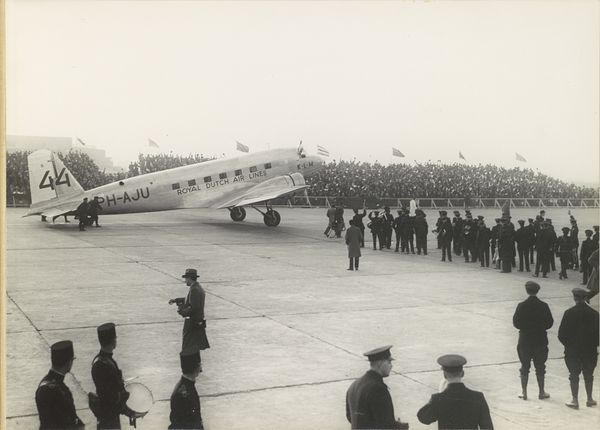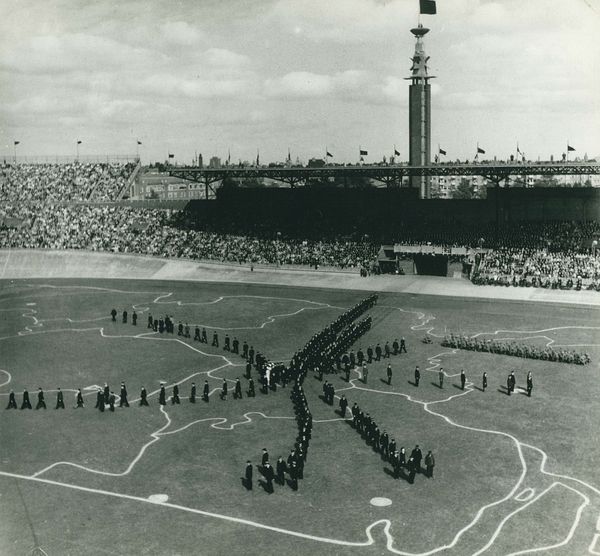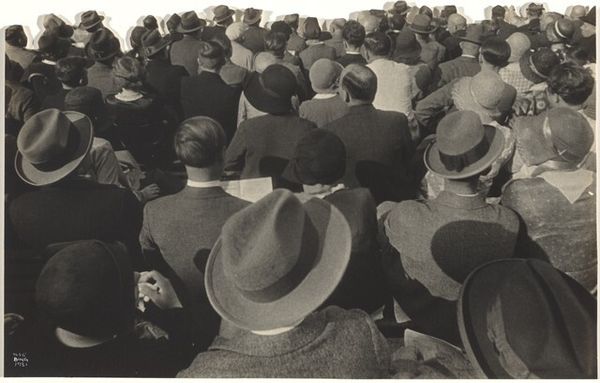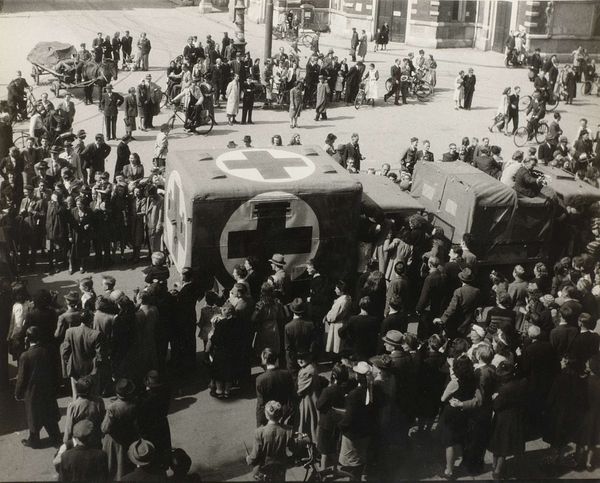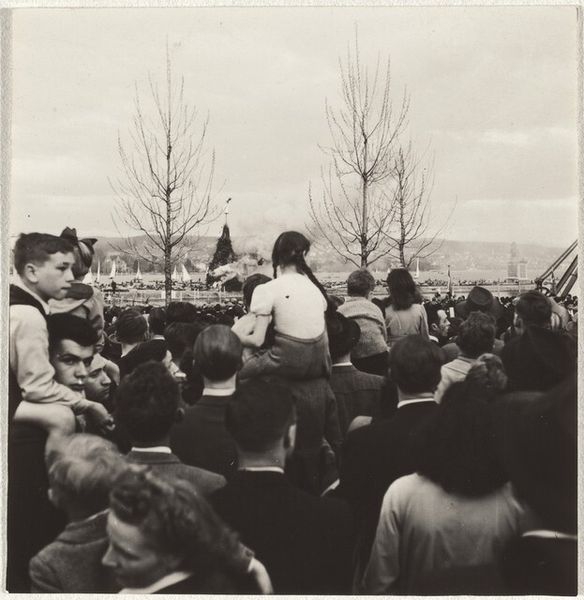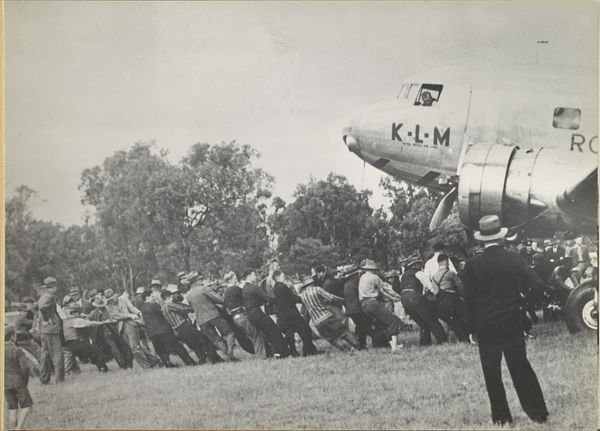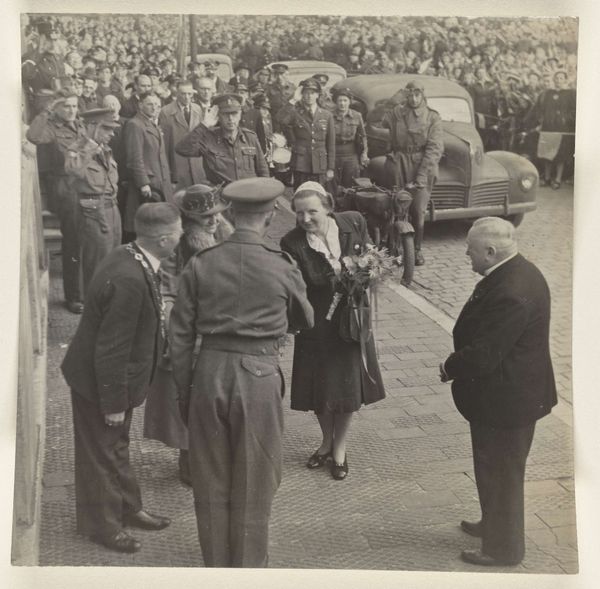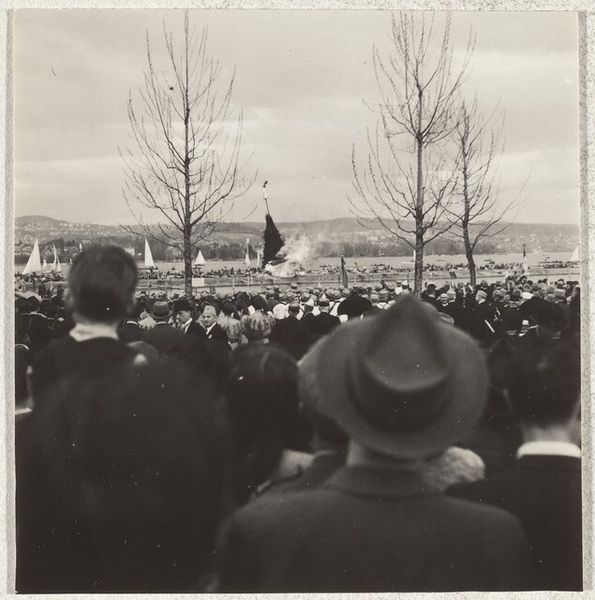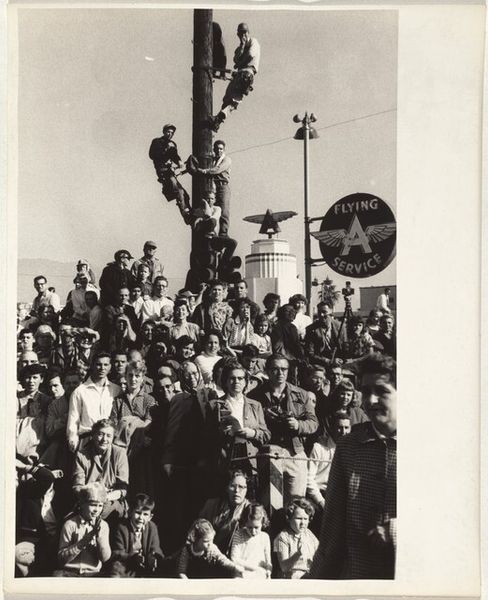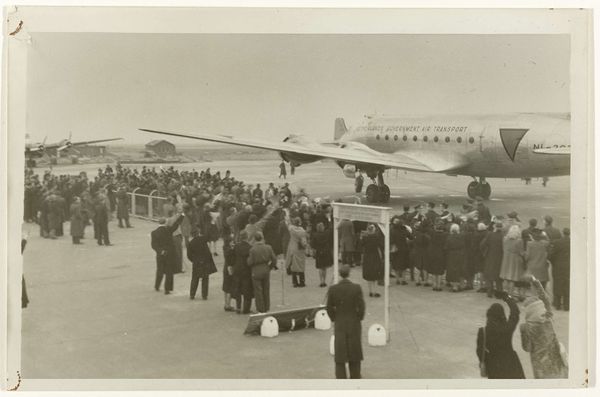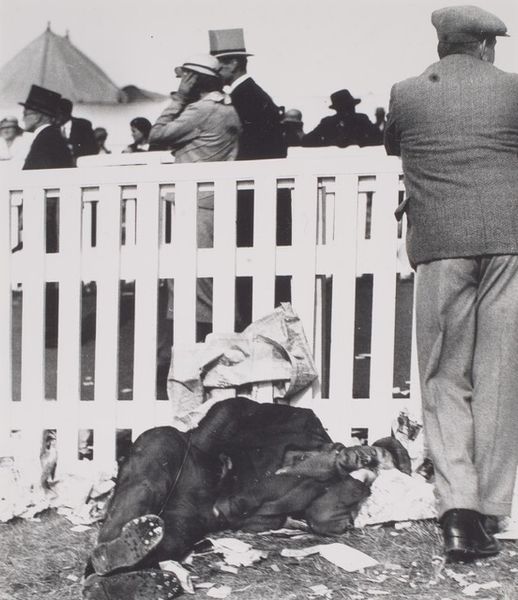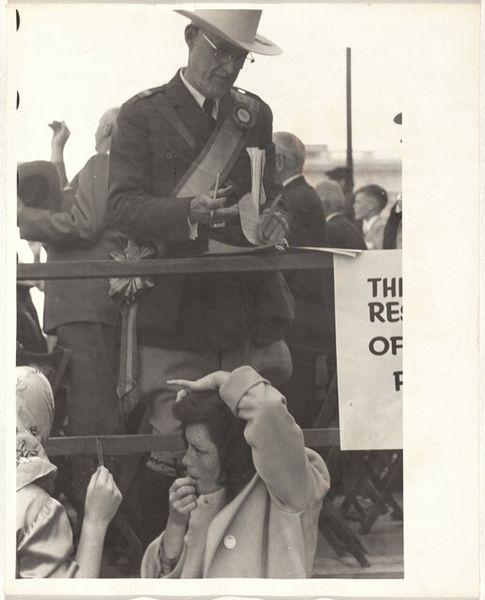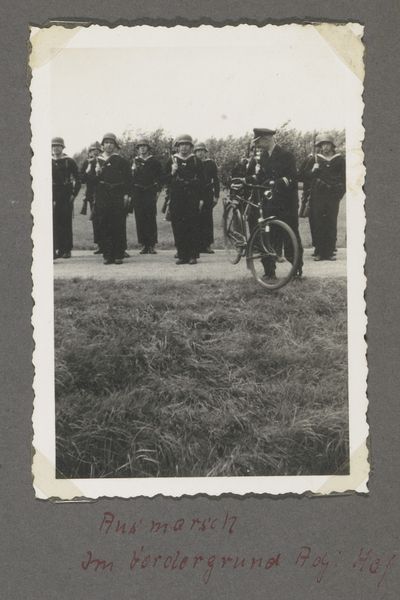
Eerste nationale bevrijdingsfeest in het Olympisch Stadion: Juliana en Bernhard leggen krans Possibly 1945 - 1948
0:00
0:00
photography, gelatin-silver-print
#
portrait
#
landscape
#
outdoor photograph
#
archive photography
#
photography
#
historical photography
#
gelatin-silver-print
#
monochrome photography
#
history-painting
Dimensions: width 15 cm, height 19.5 cm
Copyright: Rijks Museum: Open Domain
Curator: This photograph, likely taken between 1945 and 1948, captures the "Eerste nationale bevrijdingsfeest in het Olympisch Stadion: Juliana en Bernhard leggen krans," or the First National Liberation Celebration in the Olympic Stadium: Juliana and Bernhard Lay a Wreath, by Cas Oorthuys. Editor: It's an unexpectedly quiet photograph, considering the event it depicts. The vast stadium packed with people almost fades into a gray, indistinct background. The focus is drawn to the wreath-laying and the stark white cross dominating the scene. Curator: Quiet yet charged, wouldn’t you say? Oorthuys was masterful at capturing those everyday monumental moments. Think of it: the liberation still so fresh. It feels, looking at Juliana and Bernhard, like a very tender act. Editor: Definitely. But it’s layered. What does it mean to frame national identity with a massive religious symbol so soon after a war defined by ideologies? It prompts a lot of questions about inclusivity and the stories that get centered. Curator: True. The giant cross can seem almost…imposing now. And I agree about these layers. It's about collective memory and selective framing too. It reminds me of something Anne Carson wrote about the "blur of living." Editor: Absolutely. Photography always is. And look at the sheer mass of people behind them. I am thinking of Fanon and the crowd as a kind of revolutionary energy, but that kind of unified fervor can also be manipulated. Who gets to interpret the meaning of this moment, then and now? Curator: The photo reminds me a little bit of how we attempt to find the "right angle," not only literally for a picture, but in history, for memories... perhaps even a redemptive angle, but always through our limited perspective. Editor: Precisely, Cas Oorthuys gives us much to reflect on regarding nationhood, belief systems, and the role that public spectacles have to play when we negotiate shared memory and meaning after moments of seismic rupture. Thank you for your wonderful insights.
Comments
No comments
Be the first to comment and join the conversation on the ultimate creative platform.
